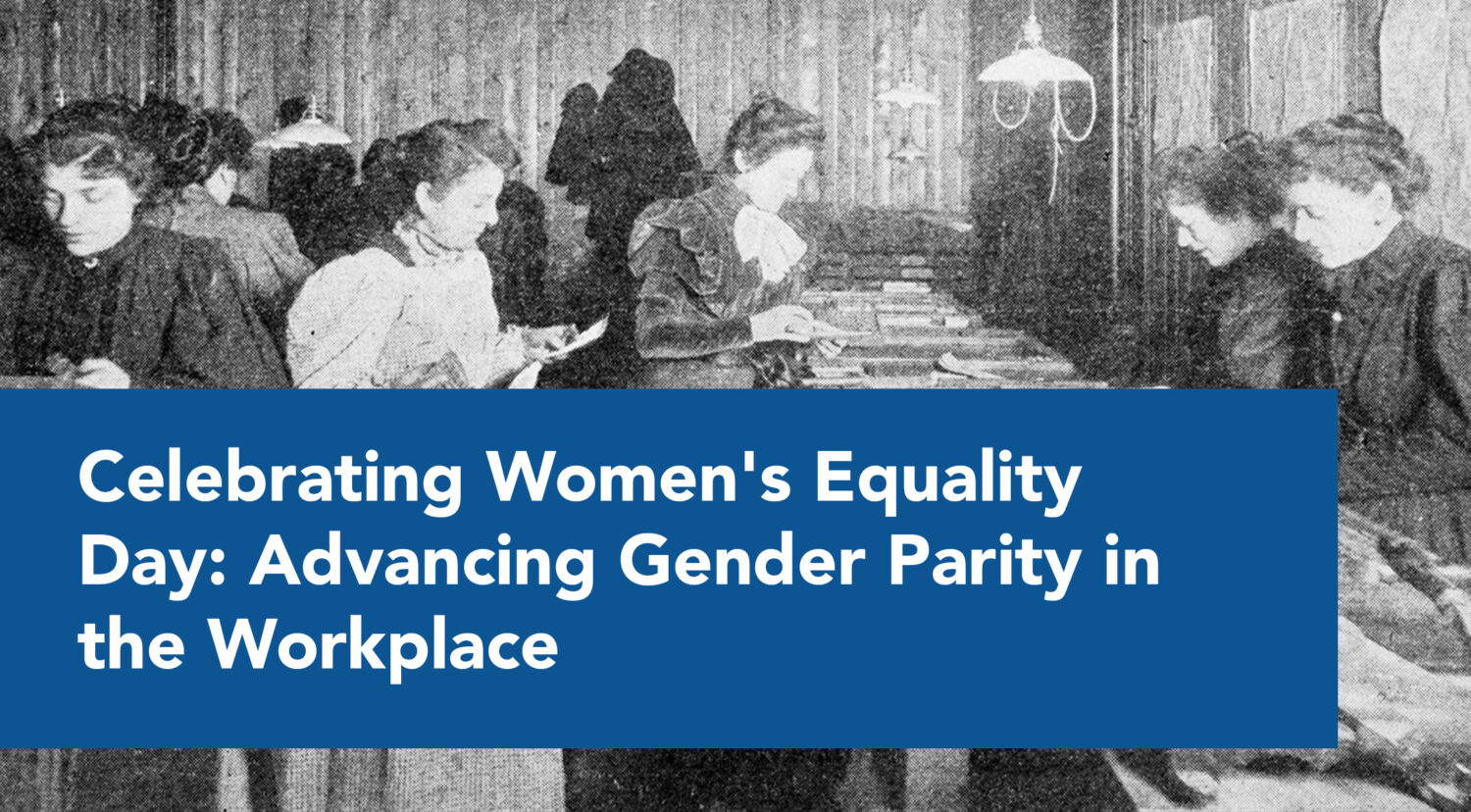

My Fellow HR Professionals,
On August 26th, we celebrate Women’s Equality Day—a day that marks a significant milestone in the fight for gender equality. The date commemorates the passage of the 19th Amendment, which granted women the right to vote. Signed into law on August 26, 1920, by U.S. Secretary of State Bainbridge Colby, this pivotal moment in history represents a hard-won victory for women’s rights. As HR professionals, it’s an ideal time to reflect on how far we’ve come in promoting gender parity and equal employment opportunities while recognizing the work still to be done.
Understanding Women’s Equality Day and its Significance
Women’s Equality Day is more than just a commemoration of a historical achievement; it’s a call to action for continued advocacy and progress. The struggle for women’s rights didn’t end with the 19th Amendment; it was merely a stepping stone toward greater equality. Today, women in the workplace still face challenges such as the gender pay gap, unequal opportunities for advancement, and underrepresentation in leadership roles. This day serves as a reminder of the importance of striving for gender parity, not just in terms of numbers but also in ensuring that women have equal access to opportunities and fair treatment across all sectors.
The passage of the 19th Amendment was made possible through the tireless efforts of countless suffragettes who dedicated their lives to the cause of women’s rights. Susan B. Anthony was one of the most influential figures in the movement, co-founding the National Woman Suffrage Association and tirelessly advocating for women’s voting rights. Elizabeth Cady Stanton, another key leader, authored the Declaration of Sentiments in 1848, which outlined the rights women should be entitled to as citizens. Sojourner Truth, a former enslaved woman, was a powerful advocate for both abolition and women’s rights, famous for her speech “Ain’t I a Woman?” which highlighted the intersection of race and gender. (Sadly, it must be admitted, black women were left out of the 19th Amendment. It would be decades before they would be invited to the table.) Alice Paul, a more radical suffragist, led the National Woman’s Party and was instrumental in the campaign that led to the passage of the 19th Amendment, organizing protests and even enduring imprisonment for her activism. These women, among many others, laid the groundwork for the rights we continue to fight for today.
Benefits of Women in Leadership
Before we move forward into how to support women in the workforce, it bears noting that women help create a more productive workplace. Rather than repeat previous posts about the benefits of diversity in the workplace as a whole, We’re going to focus on the business benefits of women in leadership and some of the barriers they still face today in reaching higher levels of leadership in the first place.
I’ve heard many first-hand accounts, seen it in company directories, and witnessed it myself, that many companies actually have a fair number of women employees and yet few, if any, women in higher leadership roles. Assuming that women in lower levels of leadership, such as middle management, have been placed in their positions by having the same (or better, due to lack of equality) level of qualifications as their male counterparts, a fair representation of them should probably reach higher levels of leadership.
While these companies have been using better and better protocols for hiring at lower levels in the first place, promotion through the highest ranks is often done through searches, referrals, and simply handpicking from those in the levels just below. There is still a lot of bias inherent in those procedures but are hard to argue with because of the nature of picking a strong leadership team, that works well together, and with “qualities” that, supposedly, can’t be found on a resume. It’s hard to argue with the business case of why women are left out by the men doing the handpicking.
Or is it?
In 2015, of the top 400 companies in California, the top 25 had 74% higher returns on assets and equity than the combined 400. The average percentage of women in leadership at those 25 companies? 35.2%. The average percentage of women in leadership in the remaining 375 companies was only 4.3%.
If that’s not enough, here’s this quote from CNN Business from several years ago:
“Goldman’s push for diversity will be focused primarily on women: Over the past four years, initial public offerings of companies in the United States with at least one female director on their boards performed “significantly better” compared to those without, [Goldman Sach’s CEO, David Solomon,] said.”
If women in leadership create such benefits for companies, why wouldn’t their inclusion and fair treatment throughout an entire organization do the same?
Promoting Gender Parity and Equal Pay for Equal Work
One of the most pressing issues that HR professionals must address is the gender pay gap. Despite significant strides in recent decades, women still earn less than their male counterparts for the same work. To move closer to gender parity, companies must commit to equal pay for equal work. This involves conducting regular pay audits, implementing transparent salary structures, and actively working to eliminate unconscious biases that may contribute to pay disparities.
In addition to addressing pay inequality, it’s crucial to ensure that women have equal opportunities for career advancement. This can be achieved by offering mentorship programs, providing leadership training, and ensuring that promotion criteria are fair and objective. By fostering an environment where women can thrive, we not only promote gender equality but also enhance the overall success of our organizations, right?
Implementing Inclusive Hiring Practices
Inclusive hiring practices are key to building a diverse and equitable workforce. As HR professionals, we must be vigilant in ensuring that our recruitment processes are free from gender bias. This includes crafting job descriptions that encourage applications from diverse candidates, using blind recruitment techniques to minimize bias, and ensuring that interview panels are diverse.
Moreover, we must actively seek out women for roles in traditionally male-dominated fields and support their growth and development within these areas. By doing so, we contribute to a more balanced workforce that reflects the diversity of our society.
Advancing Equal Employment Opportunities
Equal employment opportunities are foundational to achieving true gender equality in the workplace. It’s not enough to simply hire more women; we must also ensure that they have the support and resources needed to succeed. This includes offering flexible work arrangements, providing parental leave policies that support both men and women, and creating a workplace culture that values and respects all employees.
HR professionals have a critical role to play in shaping policies and practices that promote equal employment opportunities. By advocating for these changes, we can help to dismantle the barriers that prevent women from reaching their full potential in the workplace.
Conclusion: Committing to Gender Equality Beyond Women’s Equality Day
As we celebrate Women’s Equality Day, let us remember that the fight for gender equality is ongoing. While we have made significant progress, there is still much work to be done. By committing to inclusive hiring practices, ensuring equal pay for equal work, and advancing equal employment opportunities, HR professionals can play a pivotal role in achieving gender parity.
Let this day serve as a reminder of the importance of our work and the impact it has on creating a more equitable and just workplace for all. Together, we can honor the legacy of those who fought for women’s rights and continue to push for progress in our own organizations.
Citations:
Why August 26 is Known as Women’s Equality Day. National Constitution Center. Accessed August 20, 2024.
HR Unlimited, Inc. specializes in helping federal contractors and employers effectively meet their AAP and EEO compliance obligations. Please contact us to discuss any of your questions, concerns, or needs in this area.





